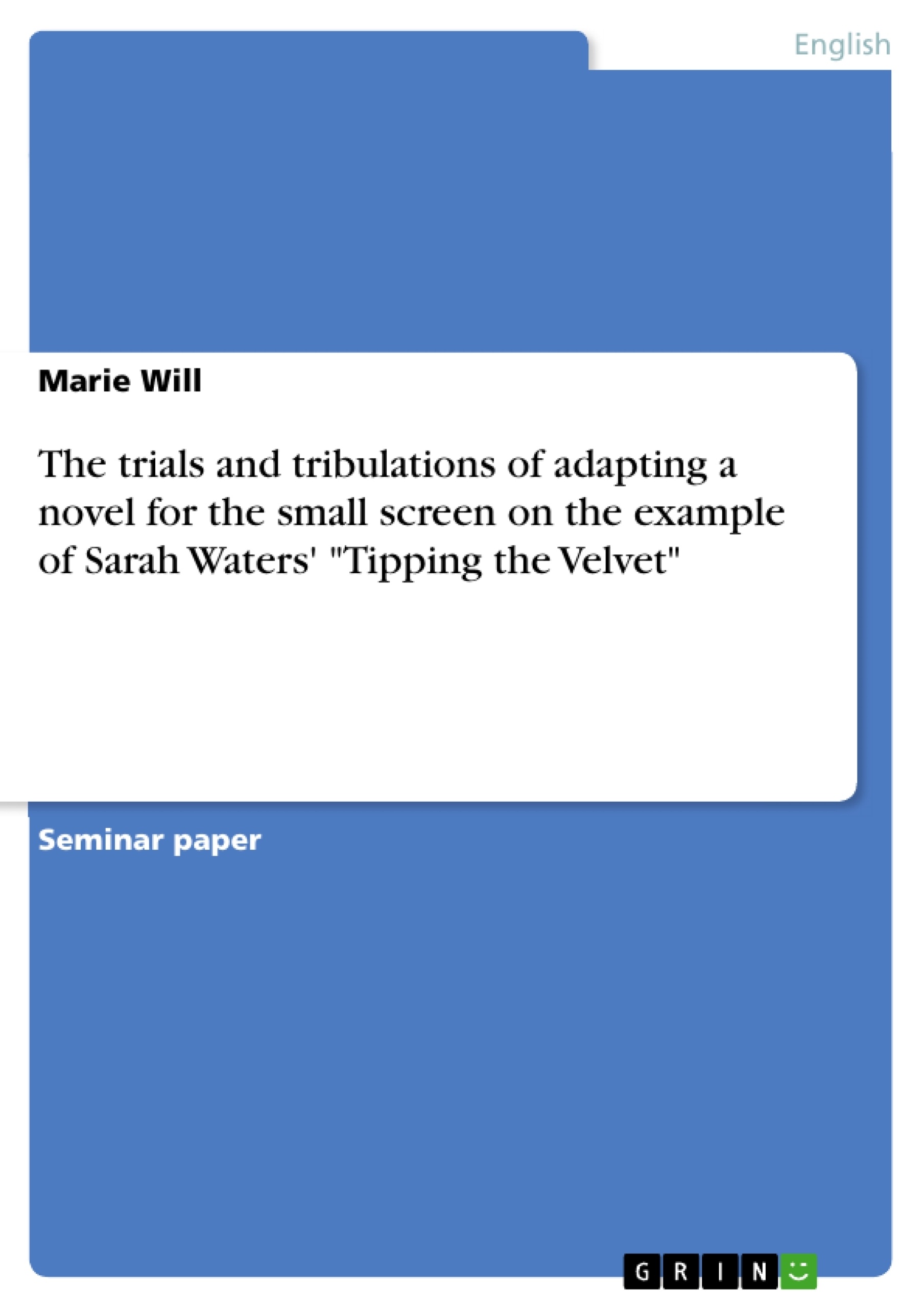In order to make their product appealing to as many viewers as possible, filmmakers often change elements in the source material they are adapting. With "Tipping the Velvet", two particular scenes from the novel were modified so that a larger audience could be reached. In this paper, I aim to show what changes were made in the TV adaptation of Waters’ novel and how these changes affected the target audience.
When asked to imagine the Victorian era, most people immediately think about upper-class, uptight ladies and gents in uncomfortable clothing, who’s general repressiveness forbade them to talk about anything personal, much less romantic or even sexual. In fact, when looking up “prude” in the Thesaurus, the first word that is listed under synonyms is “Victorian” (cf. “Prude”). Sarah Waters’ novel "Tipping the Velvet" about a young woman from the countryside who falls in love with a male impersonator, moves to London with her and goes on to search for her sexual and gender identity does not seem to fit this picture. However, when looking more closely, the Victorian era was not as prudish as we like to think. At only 32, Waters, with her first publication, “revolutionised gay literature” by creating a narrative that “imagine[d] a Victorian lesbian history through the sexual adventures of cross-dressing” (Allfree). This was something entirely new for the wide readership. Although a fair share of fictional as well as non-fictional work on Victorian sexualities had been published during the 20th century, and there even existed contemporary Victorian writing on this topic – as Waters points out in the afterword of the 20th anniversary edition (cf. Waters 474) – none of these works had gained such a wide recognition by literary critics as well as the public.Following its huge success, Waters’ novel was quickly adapted for the small screen. The 2002 BBC adaptation of Tipping the Velvet mostly follows the plot as it was constructed by Waters with only small differences. A simple – yet not entirely wrong – answer to the question of why the TV series was watched by so many people would be accessibility. But is that really the only reason why the TV program reached so many more people compared to the already widely read and highly acclaimed novel?
Table of Contents
I Introduction
II An Excursion into Adaptation Studies
III Broad vs. Narrow Audience: How the Target Audience Influences Changes in the Source Material
IV Taking a Closer Look: An Analysis of two Crucial Moments in the Novel and the Series
IV.I The Double Act
IV.II The Rally
V Summary
Works Cited
- Quote paper
- Marie Will (Author), 2019, The trials and tribulations of adapting a novel for the small screen on the example of Sarah Waters' "Tipping the Velvet", Munich, GRIN Verlag, https://www.grin.com/document/1369017
-

-

-

-
Upload your own papers! Earn money and win an iPhone X. -

-
Upload your own papers! Earn money and win an iPhone X. -

-
Upload your own papers! Earn money and win an iPhone X. -

-
Upload your own papers! Earn money and win an iPhone X. -

-
Upload your own papers! Earn money and win an iPhone X. -

-
Upload your own papers! Earn money and win an iPhone X. -

-
Upload your own papers! Earn money and win an iPhone X.

